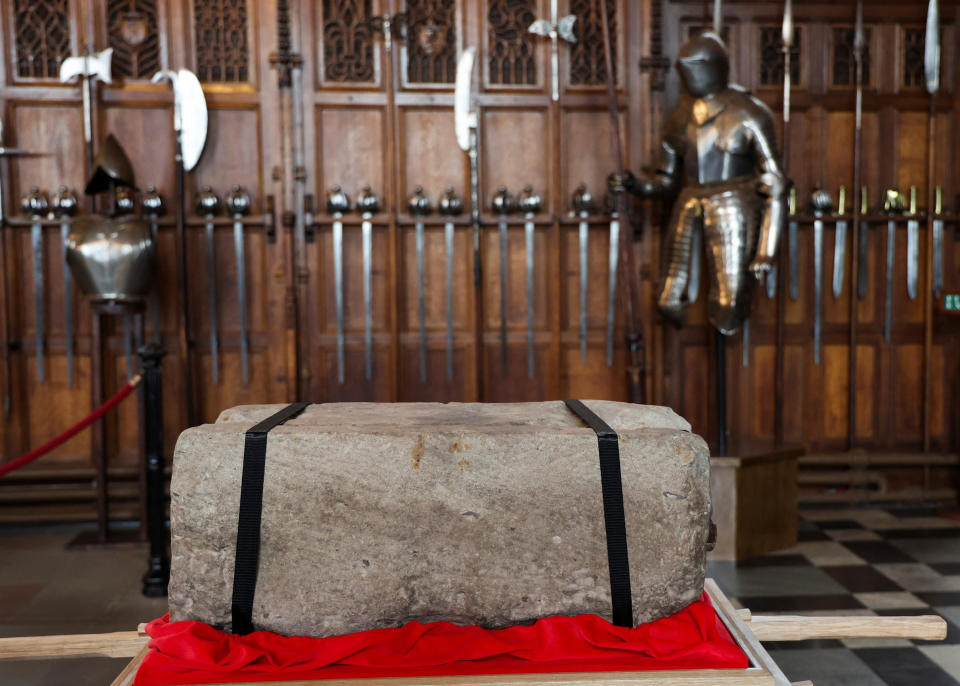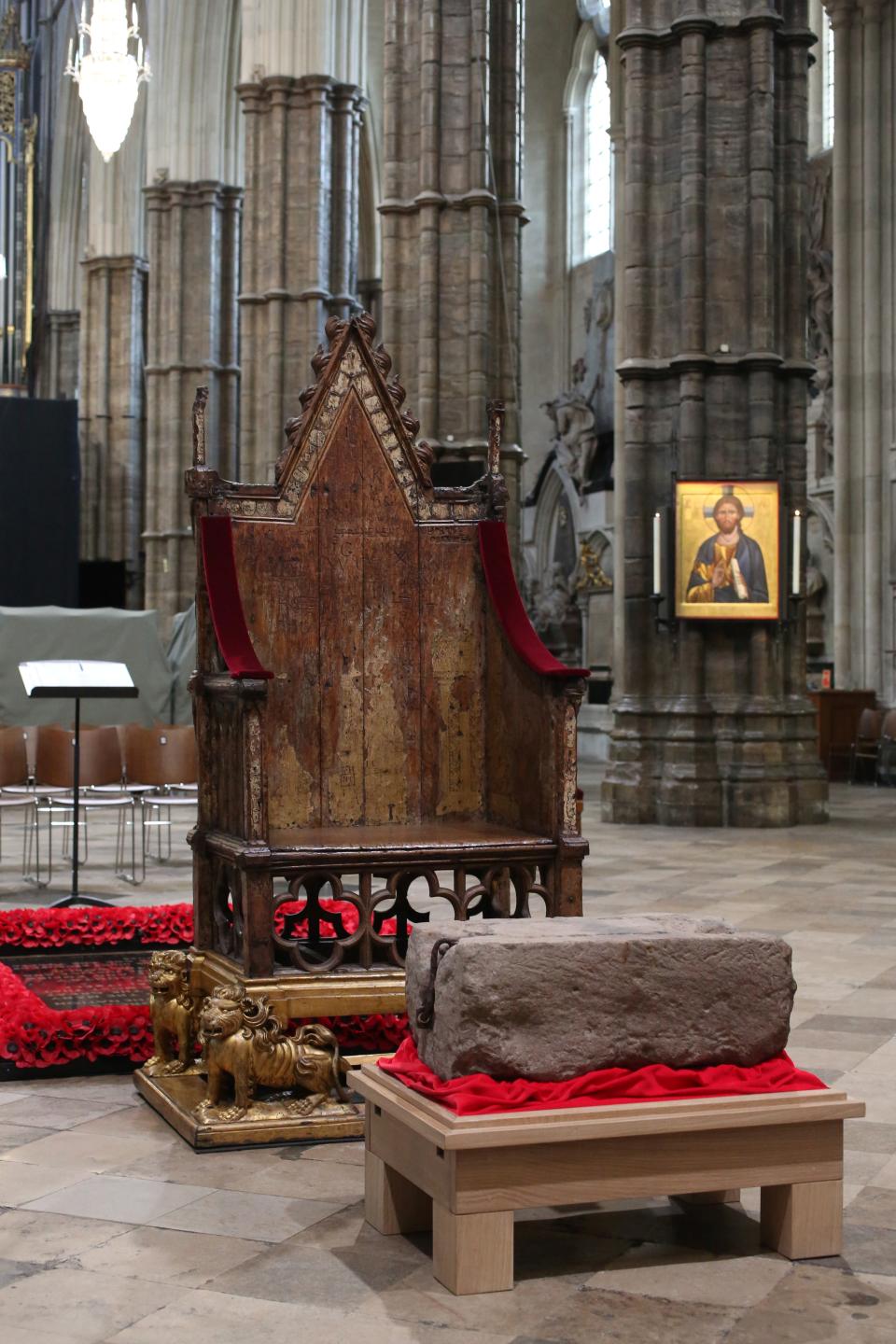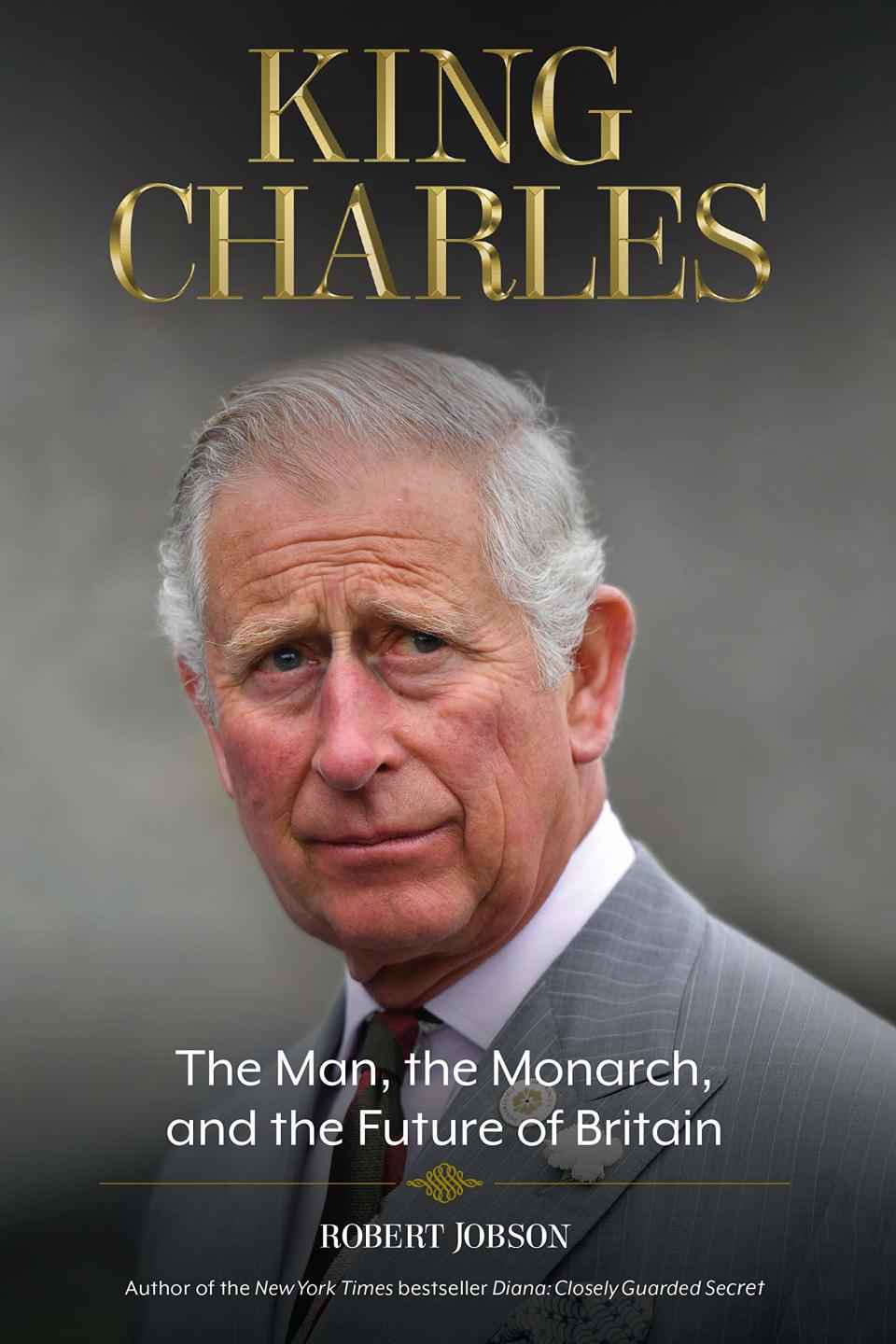What Is The Stone of Destiny? An Ancient Relic Returned For Charles’ Coronation

- Oops!Something went wrong.Please try again later.
If you’re watching King Charles’ coronation, you might be wondering what the big stone known as the Stone of Destiny actually is. The Stone of Destiny or Stone of Scone (pronounced Scoon) has a complicated history and the new King’s coronation marks its first return to England in over 20 years.
On April 29, 2023, the Stone was brought from Edinburgh, Scotland in preparation for King Charles’ coronation. A ceremony was held in Westminster Abbey. A service conducted by the Dean of Westminster, the Very Reverend Dr David Hoyle, said in his Bidding: “Today we meet in deep friendship and respect, confident in our different histories, here to acknowledge what unites us. We have a common calling under God which summons citizens of all kingdoms to find a home in the Kingdom of Christ, for he is our peace.” He continued, “We meet to pray for Their Majesties King Charles and Queen Camilla, for the Royal Family and for God’s blessing on all those who now work so hard on the preparations for the Coronation. We will pray for the government and people of Scotland and for our sisters and brothers in the churches of Scotland. With nations and with the Commonwealth we look to the Coronation where, in worship and music, we will find a common voice and express a common hope.”
More from StyleCaster
How to Watch Charles' Coronation Concert To See Katy Perry & Lionel Richie Live
Who Is Finnegan Biden? Jill Biden's Granddaughter Was At The Coronation
Kate Middleton's King Charles III Coronation Look Honored Princess Diana
So what’s the deal with the ancient stone? Read more below to find out.
What is the Stone of Destiny?
Click here to read the full article.

What is The Stone of Destiny? The Stone of Destiny is an ancient relic supposedly dating back to the Biblical era and a marker for coronation and royalty among Scots and English rulers.
According to Celtic myth, Jacob rested his head on the stone and received visions from God on it. The stone has traveled throughout Europe and was thought to be brought to Ireland by the prophet Jeremiah. However, according to British archaeologist David Breeze to National Geographic, the stone cannot have been Jacob’s Pillow “because that would have been limestone.”
A prophecy was supposedly attached to the stone by metal. One translation by Sir Walter Scott read, “Unless the fates be faulty grown / And prophet’s voice be vain / Where’er is found this sacred stone / The Scottish race shall reign.”
The stone was used by Scottish kings to be crowned at ceremonies, but the stone was seized by King Edward I in 1296 after the First Scottish War of Independence. The King took into Westminster Abbey where it resided for more than five centuries. The stone was made to fit coronations on the custom-made oak Coronation Chair. Since then, it has been used for every monarch in England for their coronation.
The stone was moved only twice in the 16th century when Oliver Cromwell was inducted as Lord Protector of the Commonwealth of England and the 20th century due to safety reasons during World War II.
During the winter of 1950, four Scottish nationalists, Ian Hamilton, Gavin Vernon, Kay Matheson and Alan Stuart, broke into Westminster Abbey and stole the Stone of Scone to return it to Scotland. The stone broke into two and the Coronation chair was damaged. The boys buried the bigger part of the stone in Kent and it was later recovered at Arbroath Abbey. It was returned to Westminster Abbe four months after its removal. The stone was back ready in time for Queen Elizabeth II’s coronation in 1953.
The stone was later returned to Scotland under the advice of Queen Elizabeth II in 1996. Prince Andrew and Prime Minsiter John Major handed over the Royal Warrant to transfer the stone into the safekeeping of commissioners for the Regalia. It currently sits in the Crown Room of Edinburgh Castle, and briefly returned to London for King Charles’ coronation.

In preparation for King Charles’ coronation, Krista Blessley told Reuters there have been a lot of preservation efforts to make the Coronation go smoothly as the Coronation Chair is the oldest piece of British furniture used for it’s original intention. “The coronation chair is extremely fragile. It has a complex layer structure which means that the gilding layers on it often flake off,” Blessley said. “So a lot of my work at the moment is sticking those layers of gilding back down and making sure it’s completely sound for the coronation.”
“It is … a great responsibility to ensure the safe voyage and return of such an important national symbol, and one which has required the care, skill and expertise of a range of different specialist teams across our organisation,” said Kathy Richmond, head of collections at Historic Environment of Scotland.
During the service blessing the stone, the Right Honourable The Lord Lyon King of Arms said in his address: “The Stone was taken from its place in the Abbey of Scone to this Abbey Church in 1296 by command of King Edward I in an act of enmity. It was returned to Scotland in 1996 by command of Her late Majesty Queen Elizabeth II in an act of amity and now comes again to this place by command of King Charles III as an act of unity and a symbol of friendship.” The Very Reverend Professor David Fergusson, Dean of the Chapel Royal in Scotland and Regius Professor of Divinity, University of Cambridge, said: “Scripture recalls us to the bedrock of faith, the stones from which are hewn, the foundations upon which our lives must be built if we are to live well with one another – foundations made by God, our Creator and Sustainer. So as we mark the arrival of the Stone of Scone today, we thank God for our common purpose, for bonds of friendship, and for the rich heritage of faith.”
King Charles: The Man, the Monarch, and the Future of Britain

With exclusive interviews and extensive research, King Charles delivers definitive insight into the extraordinary life of His Royal Highness, former Prince of Wales, as he takes the throne, a watershed moment in modern history and in the British monarchy. New York Times bestselling author Robert Jobson debunks the myths about the man who became king, going beyond banal, bogus media caricatures of Charles to tell his true story. Jobson—who has spent nearly thirty years chronicling the House of Windsor, and has met Charles on countless occasions—received unprecedented cooperation from Clarence House, what was the Prince’s office, in writing this illuminating biography.
Our mission at STYLECASTER is to bring style to the people, and we only feature products we think you’ll love as much as we do. Please note that if you purchase something by clicking on a link within this story, we may receive a small commission of the sale.
Best of StyleCaster


